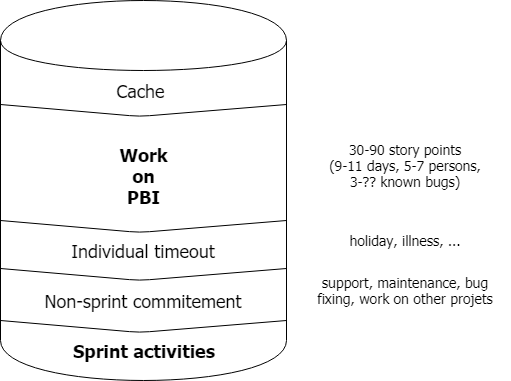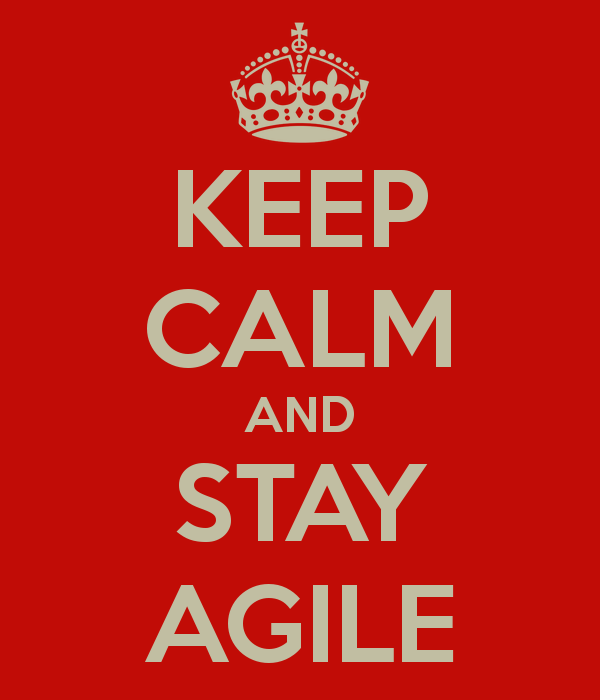Refinement
| Was | kontinuierliche Pflege und Weiterentwicklung des Product Backlogs |
| Wer | verantwortlich: Product Owner (PO) – zu diskutieren mit: Developer (DEV) Team |
| Wann | während dem Sprint |
| Wieso | damit PO und DEVs das Backlog auf den aktuellen Stand bringen > neue Storys ersichtlich machen! |
| Zweck | die höher priorisierten Items im Backlog so vorzubereiten, dass sie sich gut für das Sprint Planning nutzen lassen |
Beispiele
- Aufnahme von neuen Epics / Features / User Storys / User Tasks in das Backlog
- Verfeinerung von vorhandenen Epics / Features / User Storys / User Tasks und ggf. Aufteilung in mehrere kleine Backlog Items
- Zusammenfassen von User Storys
- Diskussion der Akzeptanzkriterien, Annahmen und Einschränkungen
- Identifikation von Abhängigkeiten
- Korrektur von Aufwandsschätzung aufgrund neuer Erkenntnisse
- Veränderung der Priorisierung aufgrund neuer Erkenntnisse
- Entfernen von irrelevanten/obsoleten Epics / Features / User Storys / User Tasks aus dem Backlog
- Beseitigung von Unklarheiten durch gemeinsame Diskussion, wobei es um das “was” und nicht um das “wie” geht
Planning
| Was | legt die Arbeit dar, welche innerhalb eines Sprint erledigt werden soll |
| Wer | verantwortlich: Product Owner (PO) – Diskussion mit: Developer (DEV) Team |
| Wann | Sprint-Start (Planning initiiert den Sprint) |
| Why | um die notwendige Arbeit für ein Produktinkrement zu planen > erstellt den Sprint Backlog |
| Zweck | Ziel: die wichtigsten Product Backlog Items (PBIs) für den Sprint zu wählen und so zu planen, dass diese auch umgesetzt/geliefert werden können |
Fragen
- Warum: Was macht den Sprint wertvoll?
- Was: Was kann im Sprint alles gemacht werden? Was möchte das Team alles anpacken?
- Wie: Wie kann die gewählte Arbeit erledigt werden? Wie möchte das Team das anpacken?
Refinement
| What | continuous care and enhancement of the Product Backlog |
| Who | responsible: Product Owner (PO) – to be discussed with: Developer Team (DEVs) |
| When | during Sprint |
| Why | to bring the Backlog up to date > show new Stories |
| Purpose | prepare the Product Backlog with high prioritized PBIs so that they can be used for future Sprint Plannings |
Examples
- include new Epics / Features / User Storys / User Tasks in the Backlog
- refine existing Epics / Features / User Storys / User Tasks or split them in smaller Backlog Items
- abstract similar User Storys
- discuss the acceptance criteria, assumptions and constraints
- identify dependencies
- correct estimations due to new insights
- change the prioritization due to new findings
- delete irrelevant and obsolete Epics / Features / User Storys / User Tasks from the Backlog
- discuss the “what” and not the “how” and try to remove misunderstandings
Acceptance Criteria
- To define boundaries: to help development team to know when a user story is completed
- To reach consensus: to synchronizes the development team (what conditions should be met) with the client (what to expect from the app)
- To have a basis for tests: to check if a system works as expected (positive and negative testing)
- To specify planning & estimation: to divide user stories into tasks so that they are correctly estimated and planned
Beispiele
- User Story:
As a website user
I want to search on the webpage
So that I can find necessary information. - Scenario: User searches for an item by its name
Given that I’m a guest user
When I open the ‘Products'”‘ page
Then the system shows me the list of all products
– the system shows the ‘Search’”’ section in the right top corner of the screen
– when the ‘Search’ field is filed the name of an existing item will be shown as suggestion
– click the ‘Apply’ button or press ‘Enter’ to start searching
– the system shows products in the ‘Search Results’ section with product names matching entered
– the system shows the number of search results in the top of the ‘Search Results’ section
Planning
| What | Sprint Planning initiates the Sprint by laying out the work to be performed for the Sprint |
| Who | responsible: Product Owner (PO) – to be discussed with: Developer Team (DEVs) |
| When | starts the Sprint |
| Why | to plan the work necessary to create a product increment > create the Sprint Backlog |
| Purpose | Goal: to select the Product Backlog items for the Sprint + the plan for delivering them |
Questions
- Why is this Sprint valuable?
- PO: how the product could increase its value and utility in the current Sprint
- Scrum Team: collaborates to define a Sprint goal that communicates why the Sprint is valuable to stakeholders
- What can be done this Sprint? What do we want to tackle in the upcoming sprint?
- discussion with the PO: the DEVs select items from the Product Backlog to include in the current Sprint
- Scrum Team may refine these items during this process, which increases understanding and confidence
- DEVs selecting how much can be completed within a Sprint may be challenging (the more the Developers know about their past performance, their upcoming capacity, and their DoD, the more confident they will be in their Sprint forecasts)
- How will the chosen work get done? How do we want to tackle it?
- DEVs plan the work necessary co create an increment that meets the DoD for each selected PBI (this is often done by decomposing PBI into smaller work items of one day or less)
- DEVs decide how this is done (turn PBIs into Increments of value)
- all together: the Sprint Goal, the PBI selected for the Sprint, plus the plan for delivering them are together referred to as the Sprint Backlog
- Sprint Planning is timeboxed to 4 hours for a 2-weeks Sprint
Agenda
- Get clear picture to the “what” and “why”
- Product Owner presents sprint goal and all associated PBIs
- Team (all together) should make Sprint goal clear and easy so that all team members can see AND understand it
- PO answers comprehension questions from the team
- Get clear picture to the “how”
- estimate PBIs if that have not been done yet or
- refine estimation if already estimated
- start a detailed implementation discussion
- DEV Team forecasts delivery
- DEV team makes a prediction to product owner (and stakeholders) about what PBIs will be delivered at the end of the sprint according to the collaboratively written DoD
- DEV team makes a commitment and form the Sprint Backlog (decide on which will worked obligatory and on which optionally/additionally)
- DEV Team breaks down work
- this second part of Sprint Planning often takes place without the PO
- development teams break down the PBIs into smaller work packages (creates tasks or subtask)
Sprint capacity

Sprint Calendar
| Monday | Tuesday | Wednesday | Thursday | Friday |
|---|---|---|---|---|
| – | – | – | Sprint Planning | Daily |
| Daily Refinement Tech Talk | Daily | Daily Overall Refinement | Daily | Daily |
| Daily Refinement | Daily Overall Planning | Daily Sprint Review Team Sprint Review SW Sprint Retro | – | – |


